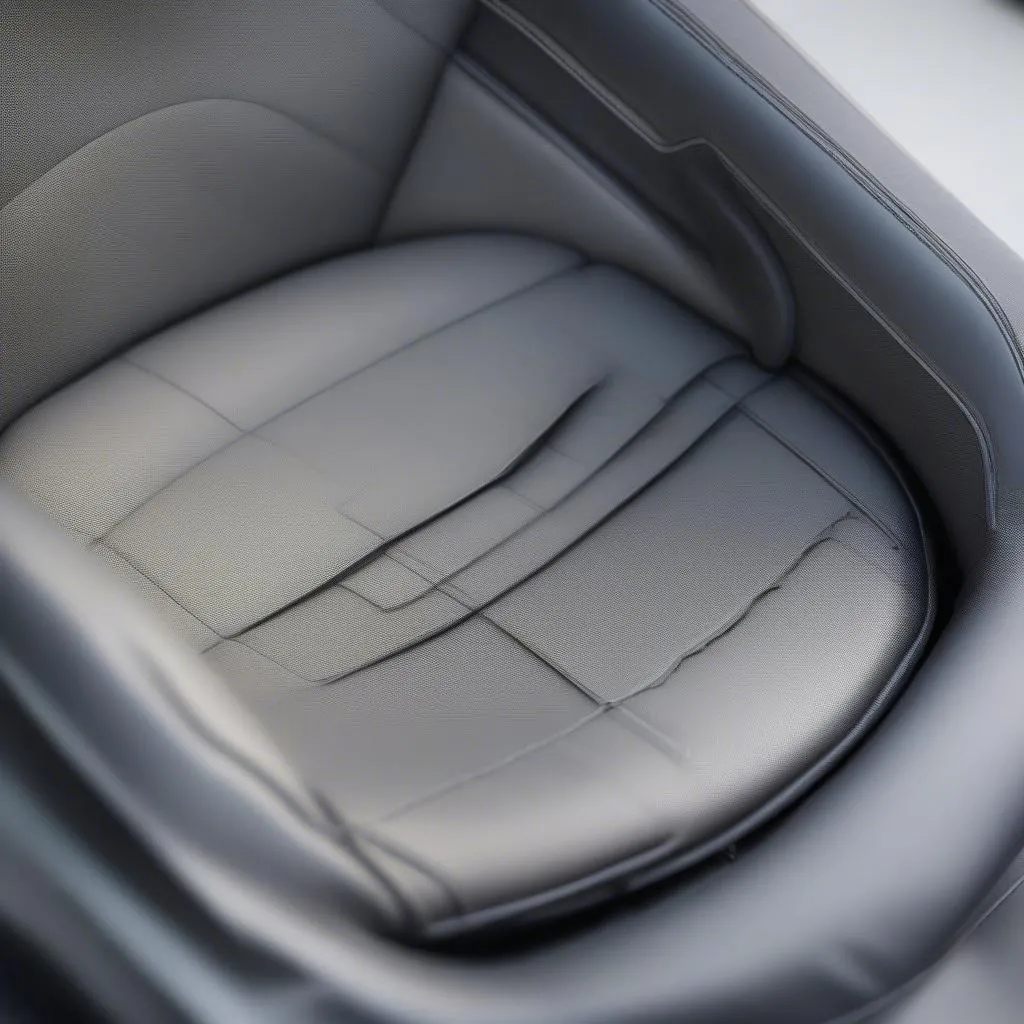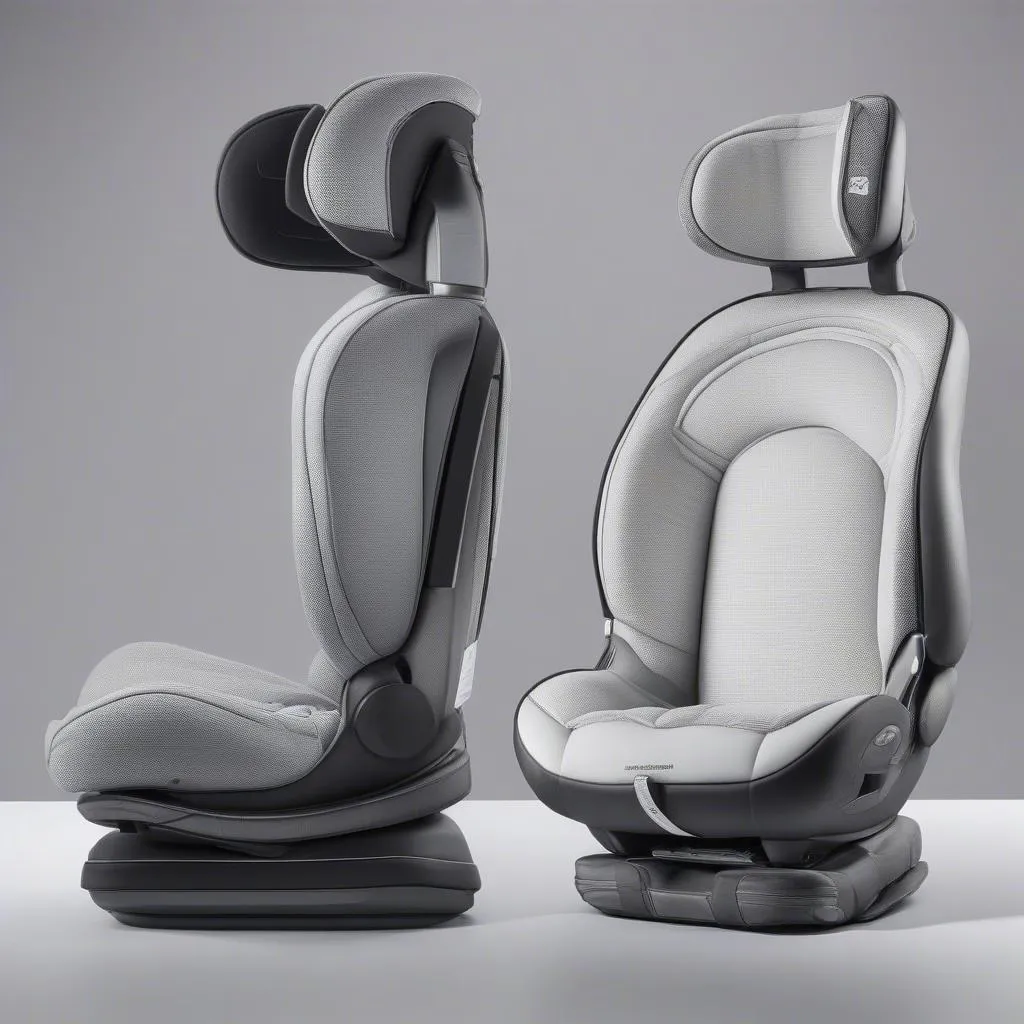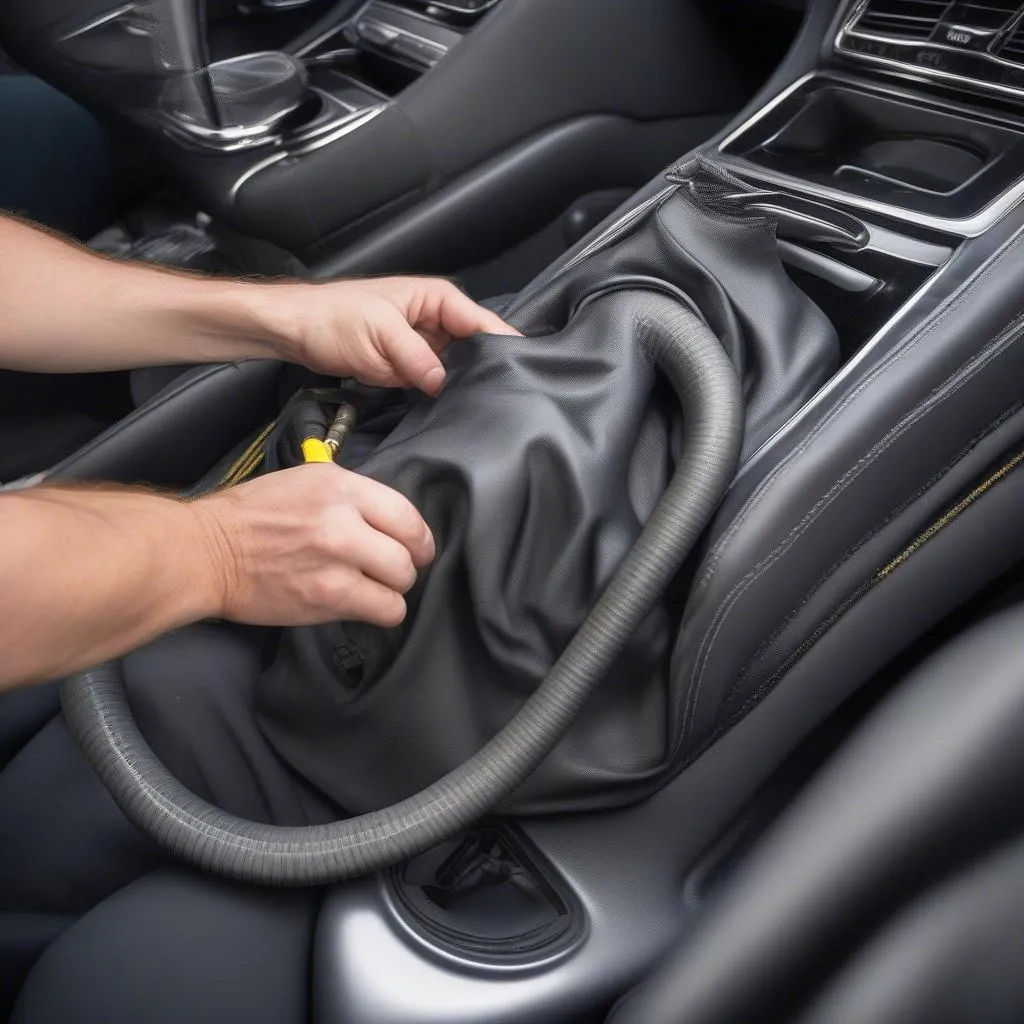A deflated or malfunctioning seat air bladder can quickly turn your luxurious Mercedes ride into an uncomfortable experience. But don’t worry! This comprehensive guide will walk you through the common causes, symptoms, and solutions for fixing Mercedes seat air bladder issues. Let’s get your ride back to feeling luxurious.
Understanding the Problem: What is a Seat Air Bladder and Why Does it Fail?
Seat air bladders are inflatable cushions within your Mercedes seats that provide adjustable lumbar and bolster support, ensuring a comfortable driving experience. Over time, these bladders can develop leaks or become damaged, leading to deflation and loss of support.
 Mercedes Seat Air Bladder
Mercedes Seat Air Bladder
Common Causes of Seat Air Bladder Failure:
- Wear and Tear: Regular use, especially over extended periods, can weaken the bladder material.
- Sharp Objects: Pens, keys, or other sharp items accidentally lodged in the seat can puncture the bladder.
- Improper Weight Distribution: Excessive or uneven weight distribution can put undue stress on the bladder.
- Extreme Temperatures: Prolonged exposure to very hot or cold temperatures can degrade the bladder material.
Recognizing the Signs: How to Tell if Your Seat Air Bladder Needs Attention
- Visible deflation: One or more sections of your seat may appear noticeably flatter than usual.
- Loss of Support: You experience a decrease in lumbar support or feel the seat frame beneath you.
- Uneven Seat Height: One side of the seat may sit lower than the other.
- Hissing Sounds: A subtle hissing noise emanating from the seat may indicate an air leak.
 Deflated Mercedes Seat
Deflated Mercedes Seat
Gathering Your Tools: What You’ll Need for the Repair
- Replacement Air Bladder: Purchase a compatible bladder from your local Mercedes dealership or a reputable online supplier.
- Socket Set: Have a variety of sizes on hand to remove seat bolts and access the bladder.
- Flathead Screwdriver: Useful for releasing clips and fasteners.
- Zip Ties (optional): Can be used to secure the new bladder for a snug fit.
- Vacuum Cleaner (optional): Helpful for removing debris from the seat area before installation.
The Fix: Step-by-Step Guide to Replacing Your Mercedes Seat Air Bladder
Important Note: While the following steps provide a general overview, always refer to your Mercedes owner’s manual or consult a professional mechanic for model-specific instructions.
- Disconnect the Battery: Locate your car battery and disconnect the negative terminal to prevent electrical mishaps.
- Access the Seat Air Bladder: Depending on your Mercedes model, you may need to remove the seat or just the seat bottom. Consult your owner’s manual for specific instructions. This typically involves removing bolts and sliding the seat forward or backward to detach it from its rails.
- Locate and Detach the Faulty Bladder: Once you have access to the seat’s underside, carefully locate the deflated air bladder. It is typically secured with clips or small bolts. Gently detach the bladder from the seat frame and any connected hoses or wires.
- Install the New Seat Air Bladder: Align the new bladder with the mounting points of the old one. Ensure that any hoses or wires are properly connected. Secure the new bladder using the original clips or bolts.
- Reassemble and Test: Reinstall the seat, ensuring all bolts are securely fastened. Reconnect the battery and turn on the ignition to check if the new bladder inflates correctly. Adjust the lumbar and bolster settings to confirm proper functionality.
 Replacing Mercedes Seat Air Bladder
Replacing Mercedes Seat Air Bladder
FAQs: Answering Your Mercedes Seat Air Bladder Questions
Q: Can I drive my Mercedes with a damaged seat air bladder?
A: While technically possible, it’s not recommended. Driving with a damaged bladder compromises your comfort and can worsen the damage, leading to more costly repairs.
Q: Are there aftermarket seat air bladder options available?
A: Yes, you can find aftermarket alternatives. However, it’s crucial to choose reputable brands that offer compatible and durable bladders designed for Mercedes vehicles.
Q: How long does it take to replace a Mercedes seat air bladder?
A: The time can vary depending on your Mercedes model and your mechanical expertise. On average, it can take 1 to 3 hours.
Q: Can diagnostic tools pinpoint the exact location of the air bladder leak?
A: While some advanced diagnostic tools like those offered by CARDIAGTECH might offer clues, pinpointing the exact leak location can be challenging. Visual inspection and careful troubleshooting are usually required.
Conclusion:
Addressing Mercedes seat air bladder issues promptly can save you from discomfort and potentially more extensive repairs. Remember, a comfortable drive begins with a well-maintained vehicle. If you’re unsure about tackling this repair yourself, seeking professional help from a certified Mercedes technician is always a wise decision.


